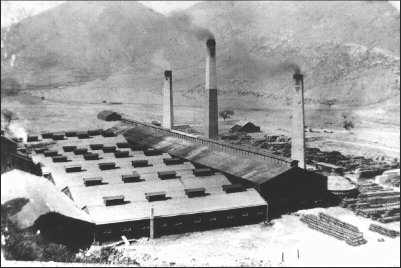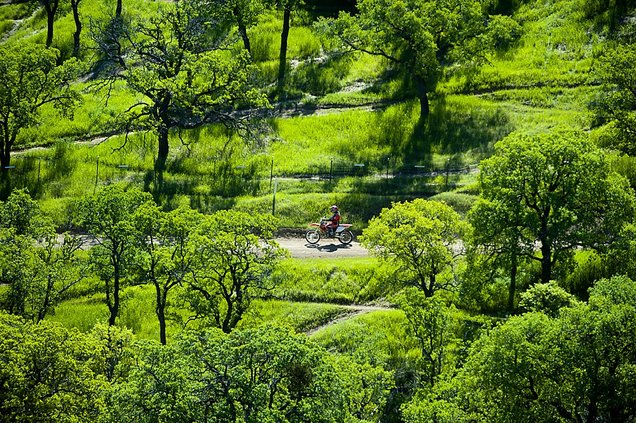Corral Hollow — a canyon that straddles the San Joaquin and Alameda county lines 6.5 miles southwest of Tracy — is well known to off-road vehicle enthusiasts.
It is where they can access the Carnegie State Vehicular Recreation Area. It has more than 1,300 acres of riding area with more than 80 miles of trails. There’s a motocross track, a 4x4 area, a 100cc track, 70cc track, ATV track, a beginners riding area, a concession area for everything from parts and safety equipment to food and non-alcoholic beverages, camping, picnic tables, and BBQ grills in addition to the seemingly endless trails.
Hours are 8 a.m. to 6 p.m. in the winter, 8 a.m. to 8 p.m. in the spring/summer, and 8 a.m. to 7 p.m. in the fall.
The day use fee is $5 while camping is $10 per night.
You take Corral Hollow Road out of Tracy — which by the way is a great bicycling route — to reach the off road vehicle park. It is one of nine such vehicle parks operated by the California State Park system.
Corral Hollow has
a rich, varied history
Off road vehicle enthusiasts aside, Corral Hollow as previously noted is appealing to roadie cyclists looking for some nearby challenging climbs and great descents. It is also a nice “Sunday drive” diversion especially while the hills are lush with greenery before the golden hues of mid-spring settle in.
It is also rich in history with the remains of several ghost towns.
The oldest route connecting San Francisco and Los Angeles at once snaked through the canyon that was once known as Portezuela de Buenos Ayres or Pass of Good Winds that led to the Livermore Valley.
It was also a route to the southern mines during the Gold Rush.
It apparently was rechristened Corral Hollow thanks to a large corral that was once in place at the canyon’s mouth to trap wild horses.
California’s first coal mines popped up in the canyon after coal was discovered in 1855 just over the Alameda County line where the road name changes to Tesla Road.
The coal was mined and shipped to Stockton where it was used to primarily power factories. Sixty-plus tons were shipped in 1856. A year later what was the Golden State’s first commercial mine closed as the owners couldn’t make it profitable.
Then in 1868 miners came across thicker coal that was of a better quality. That mine before it closed in 1870 supplied more than 6,000 tons of coal to power Central Pacific trains crossing the Altamont Pass.
The mining town of Tesla was formed in 1890 after the San Francisco & San Joaquin Coal Company constructed the Alameda and San Joaquin Railroad to serve the mines.
The mines at one point would end up yielding more than 80,000 tons of coal annually over a decade.
The firm employed around 800 miners. That allowed Tesla to have stores, a hospital, churches, a post office, school, hotel, dance hall, and a plaza with a band stand. Tesla was served by two stagecoach lines.
Besides clay and coal there were also sand deposits at Tesla. The sand was shipped to Stockton to make window panes at the Pacific Window Glass Co. At the time it was the only window pane manufacturer this side of the Mississippi River.
The discovery of clay in the Tesla mines led to the establishment of the Carnegie Brick & Pottery Company in 1902.
The first plant making bricks and terra cotta was established four miles east of Tesla in 1903. It happened after the Carnegie-owned Stockton Brick & Pottery Co. — known for its vase and pottery dubbed Rekston ware as well as tile and sewer pipe — burned. That prompted the decision to build a replacement plant closer to the Tesla mines.
The new pottery plant had eight beehive kilns. They were used to manufacture cornice tiles, porcelain figurines and other items that were in addition to various sizes of sewer pipe.
Then in 1904 a plant producing clay sewer pipe was constructed midway between Carnegie and Tesla.
Tesla grew into a town of 1,200. Carnegie at one point had 300 residents.
Both towns were devastated by a flood in 1911. The towns were abandoned as the company couldn’t afford to rebuild them or the railroad.
The property where the pottery once stood is today used by off-road vehicle enthusiasts.
Carnegie, named after Andrew Carnegie, in its heyday had a school, hotel, bakery and saloon in addition to cabins and bunkhouses.
The Carnegie plant had 26 kilns, and two drying sheds that could produce up to 20,000 bricks a day. The tallest chimney was 317 feet.
The terra cotta items Carnegie produced — they are essentially ornate clay architectural accents used in buildings — can still be seen today.
Examples of Carnegie produced terra cotta grace such buildings in San Francisco as the Palace Hotel, the original Bank of Italy (Bank of America) and Methodist Book Concerns to name a few.
Los Angeles buildings with terra cotta facade produced at the Carnegie plant include the Oakland Hotel as well as the Los Angeles County Natural History Museum.
At its peak the Carnegie plant employed 200 workers.







